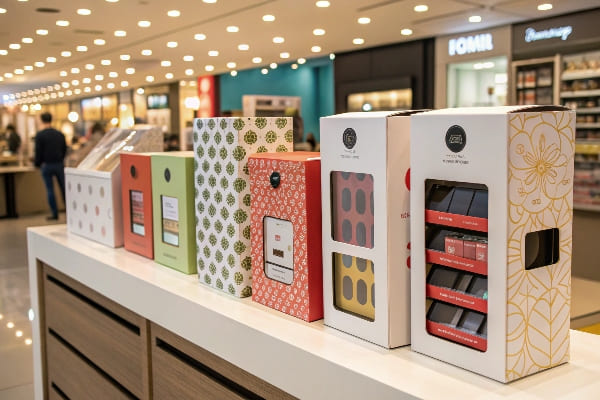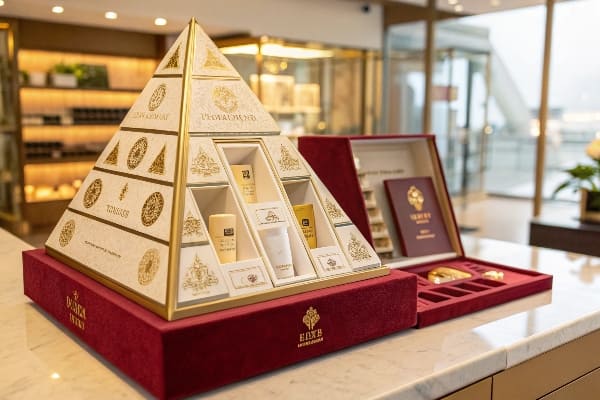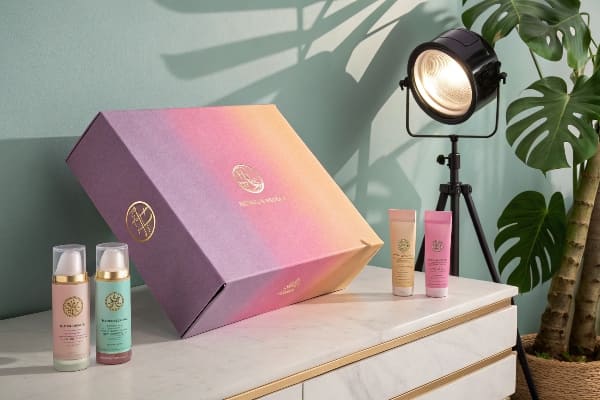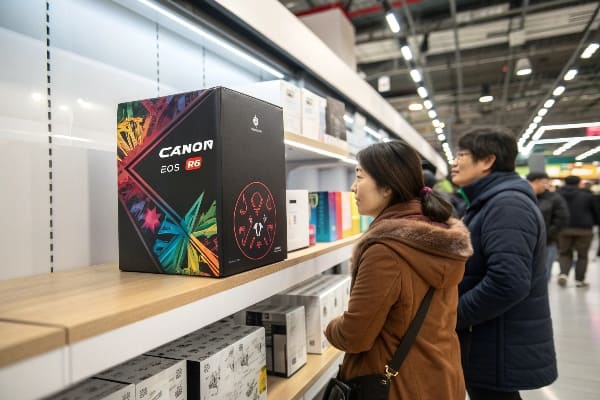Retail shelves are crowded. My customers struggle to make their new products stand out, and rushed launches leave no room for trial and error. So they ask me for fast, flexible display solutions.
Yes. Retail display packaging boxes can be customized in size, strength, print, and shape to fit a brand’s product, budget, and launch timeline.

A quick answer is not enough. I will show why true customization matters, how it works, and what value it brings, using clear steps from my factory floor.
What are custom display boxes?
Buyers want display boxes that do more than hold product. They need them to sell. Time is tight, costs are high, and mistakes break trust.
Custom display boxes are purpose-built cartons or stands shaped, printed, and reinforced to present and protect a specific product at point of sale.

Why definition matters
A clear definition sets the scope. When David, a U.S. hunting-gear buyer, called me, he thought “display box1” meant any printed carton. I explained three core types: counter, floor, and pallet. Each has limits on footprint, load, and eye level. Without that clarity, misquotes happen.
Main components and options
| Component | Fixed Option | Flexible Option | Note |
|---|---|---|---|
| Structure | Tray only | Tray + header | Header lifts brand above clutter |
| Board grade | E-flute | BC double wall2 | Heavy bow kits need BC double wall |
| Print method | Flexo | Offset + lam | Offset wins for photo realism |
| Finish | None | Spot UV, foil | Foil draws hunters to premium gear |
Design workflow in practice
I start with a 3D sketch. My engineer checks load in SolidWorks3. We cut a white sample on CAD. David drops a 7 kg crossbow inside and shakes it. We scan cracks, adjust cross-braces, and repeat until calm. Only then do we add color, using his Pantone chart to lock exact bark-green.
Can cardboard boxes be customized?
Retail buyers often think corrugated is rigid and dull. They fear dull prints, bland kraft, and crushed corners.
Yes. Cardboard boxes accept custom sizes, die-cut windows, multi-layer reinforcements, and vivid full-bleed graphics without sacrificing recycling.

Limits and freedoms
| Factor | Limit | Freedom obtainable |
|---|---|---|
| Minimum run | 500 pcs per print plate | Digital print removes this limit4 |
| Box size | Depends on press bed | Combine panels with stitching |
| Color consistency | ΔE ≤ 2 with closed-loop ink | Press profiling keeps shade locked |
Simple tweaks, big payoffs
A 2 mm deeper tuck makes room for a free bonus arrow tube. A tear-away window turns the shipper into a shelf-ready tray. My team has three lines, so I slot short custom runs between bulk orders. This keeps tooling costs low. When Walmart wanted a red seasonal sleeve on Barnett bows, we printed only the sleeve, not a whole new master box, and met the Black Friday truck.
Sustainability notes
All custom cuts still fit standard sheets to cut waste. We certify FSC5 and print logos openly, easing U.S. chain-of-custody checks. Recyclers accept our water-based inks6, so brands keep green pledges.
What are custom retail boxes?
Retail boxes differ from plain shipping cartons. They act as silent salespeople. A missed message loses shelf battles in seconds.
Custom retail boxes are consumer-facing packages tailored in graphics, texture, and structure to convey brand value and trigger purchase at first glance.

Layers of impact
| Layer | Customer view | Hidden function |
|---|---|---|
| Artwork | Brand, story, trust | Legal, SKU, and scannable UPC7 |
| Coating | Gloss spark, matte | Moisture barrier in chilled aisles |
| Inner fitment | Velvet, pulp tray | Stops rub marks on anodized limbs |
Storytelling through structure
I once added a drop-down front flap with magnetic catch. It exposed the bow’s cam system without removing the bow. Hunters love touching gear, so lift-flaps engage them while keeping arrows locked. The box became a demo station for Bass Pro clerks.
Aligning box and display
Retail boxes nest in display trays. I score the front wall lower than the rear, so UPCs scan without lifting. Both pieces share art boards, so press alignment is one pass, one cost.
Certification and trust
U.S. distributors demand traceability. I provide ISTA 3A test reports8 and G7 color data along with the boxes. This eases inbound inspections, cuts warehouse rejections, and speeds goods to shelf.
What are the benefits of custom packaging boxes?
Many buyers ask why they should pay more for a tailored box when a plain carton exists. I give them real numbers and stories.
Custom packaging boxes lift brand visibility, guard products, reduce returns, speed shelf setup, and win repeat buyers, offsetting their modest premium.

Five clear returns
| Benefit | How it appears on shelf | Business result |
|---|---|---|
| High contrast art9 | Shoppers stop quicker | 18 % lift in first-week sell-through |
| Engineered strength10 | Intact product after shipping | 40 % fewer returns |
| Shelf-ready design | No knife for store staff | Setup time drops from 4 min to 1 min |
| QR storytelling11 | Scan leads to range video | Email sign-ups rise |
| Modular inserts | Accept future product tweaks | Saves full retool on next launch |
Case study: repeat orders
Barnett Outdoors tested one pilot run of 3,000 displays with my factory. Sales data showed a 22 % boost over generic white boxes. Their next launch doubled order volume, recovering their tooling fee inside two weeks of sales.
Risk reduction
Fake certificates ruin trust. I share live video of factory audits, raw material invoices, and load tests. Buyers keep screenshots for their own audits. This simple transparency lowers risk and shortens negotiation.
Conclusion
Custom display and retail boxes turn packaging into a profit tool. With clear goals, simple design steps, and the right factory partner, any brand can win on the shelf and at checkout.
Understanding the definition of a display box can help you choose the right type for your products, enhancing visibility and sales. ↩
Learn about BC double wall packaging to ensure your products are protected during transport and display, especially for heavier items. ↩
Explore how SolidWorks can optimize your packaging design process, ensuring structural integrity and efficiency. ↩
Explore how digital printing can eliminate traditional limitations, offering flexibility and efficiency in packaging design. ↩
Learn about FSC certification and its importance in promoting sustainable forestry practices in packaging materials. ↩
Discover the benefits of water-based inks, including their eco-friendliness and recyclability, which support sustainability efforts. ↩
Learning about scannable UPCs can improve your retail strategy and enhance customer experience at checkout. ↩
Understanding ISTA 3A test reports can enhance your knowledge of packaging standards and improve product safety and reliability. ↩
Explore how high contrast art can enhance product visibility and boost sales, making it a vital aspect of effective packaging design. ↩
Learn about engineered strength and its role in reducing returns and ensuring product integrity during shipping. ↩
Discover the impact of QR storytelling on customer interaction and email sign-ups, a modern approach to marketing. ↩

